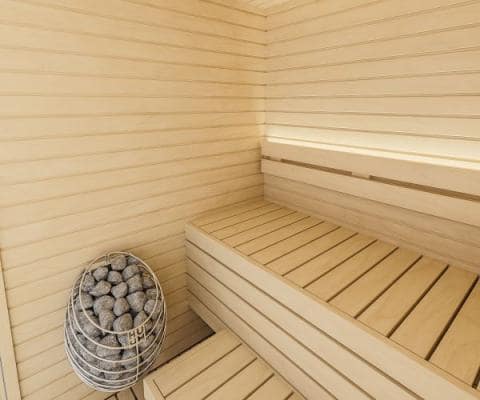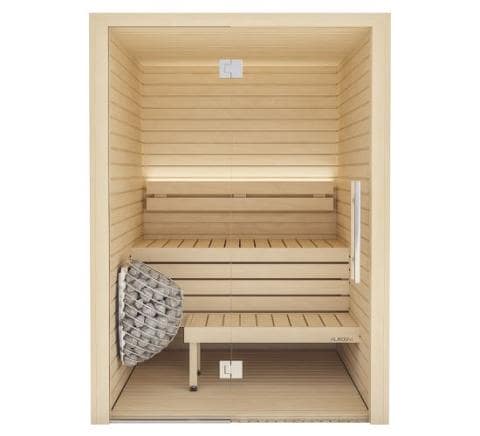Everything about Traditional Sauna
Traditional Sauna Can Be Fun For Anyone
Table of Contents6 Easy Facts About Traditional Sauna ExplainedThe 30-Second Trick For Traditional Sauna9 Simple Techniques For Traditional SaunaTraditional Sauna Can Be Fun For Anyone
The majority of the weight shed in a sauna is water loss and is re-gained upon rehydrating. Without an uncertainty sauna can be a vital component of a healthy and balanced weight loss program. To look at the differences between traditional and IR saunas, I will certainly separate these into verifiable, academic, and made distinctions.Hence, the hottest factor in the saunawhich goes to the ceiling directly over the sauna heateris generally in between 185 and 190 F. Traditional Sauna. Claims that a traditional sauna exceeds 200 F is merely not real and not applicable for electrical saunas marketed in the United States. The temperature for a far-infrared sauna is typically set in between 120 and 140 F; nonetheless, unlike the standard sauna, the goal in and IR area is not to accomplish a high temperature level
Due to the fact that of this, the temperature distinction is virtually unimportant, because extreme sweating leads to both sauna kinds, but the approach of heating the body is various. In an IR sauna the bather will feel warm and will sweat a lot, however at a lot reduced temperatures. Hence, if the goal is to spend longer time periods in the sauna, the IR sauna is an excellent choice.

The Best Strategy To Use For Traditional Sauna
When the high temperature level is accomplished, the components cycle on and off to keep the heat. Many conventional sauna individuals appreciate pouring water over the rocks to create steam to raise sauna moisture degrees. The advantages of putting water over the rocks consist of: making the space a lot more comfy, dampening the nasal passages, and allowing the usage of aromatherapy by blending essential oils with the water.
In a far-infrared sauna, the warm front pass through the body to effectively heat the body and raise the body core temperature level. To attain this boosted temperature level, Far-infrared emitters develop infrared energy which is close to the exact same wavelength as that which the body naturally emitsoften referred to as the "Important Range" of 7 to 14 microns), so the energy is well obtained by the body.
When the energy gets in the body, it causes the body temperature to increase and eventually leads to perspiration. In an infrared sauna it is necessary for the emitters/heaters to remain on practically regularly. Considering that there is no mass of rocks to keep warmth, the sauna will cool if the emitters shut down.
As pointed out above, the sauna bather in an visit our website infrared area wishes to place himself in front of running emitters to obtain maximum benefit from the warmth. The home heating time for both areas can be very various, depending upon just how the spaces are used. For a standard sauna, a bather ought to permit 30-40 minutes for the area to attain a preferred temperature and to effectively pre-heat the rocks.
All about Traditional Sauna
A well constructed sauna will usually attain a temperature level of 150-160 F in about 30-40 minutes. For hotter temperature levels, the area might require to heat for a longer period.
To some, 15 minutes was "thrown away" while the infrared energy heated the timber panels instead than warming a body, while others discover a pre-heated room to be much more comfy and believe a raised starting temperature level is necessary to start sweating. The size of advised usage for each and web link every area is approximately the same (10-15 minutes per session); however, due to the lower air temperatures and the More Help capability to feel the effects of infrared warm quicker than a standard sauna, it is not unusual for an individual to spend an overall of 20-30 minutes in an infrared sauna.
Conventional saunas tend to be bigger (therefore utilize more electrical power) than infrared saunas, although conventional saunas are certainly available in one and 2 person sizes. For a two-person traditional sauna, 5x6 or 5x7 dimension is most popular. The leading bench can easily seat two or 3 people and is additionally enough time to relax during the sauna session.


The typical cost per kWH of electrical power in the U.S. is around $0.11, so a 4.5 kW heating unit will certainly cost about $.50 to run for one hour, if the heating system runs constantly for one hour. Generally a sauna heating system will certainly compete 75% of the first hour and 50% of succeeding hours on since the elements cycle once the established temperature level is achieved.
Traditional Sauna Can Be Fun For Everyone
A two individual far-infrared area is typically physically smaller sized than a conventional sauna, usually about 4' x 4' or smaller. The IR furnace is usually 1.5-1.7 kW making use of a 120 volt 15 amp plug-in solution. Given that the room can be utilized quicker than a sauna space, we will certainly assume the room is used for to of an hour including warm up time.
There is a hardly ever gone over distinction in the social experience in between the two spaces. While our society has actually lost several of the social advantage of the traditional sauna experience, it can be very socially fulfilling. From family members time in the sauna, to heart-felt conversations with loved ones, to sauna partiesthe conventional sauna experience can result in intimate interacting socially.
The majority of greater end infrared rooms consist of tinted light therapy, audio systems and full-glass fronts.